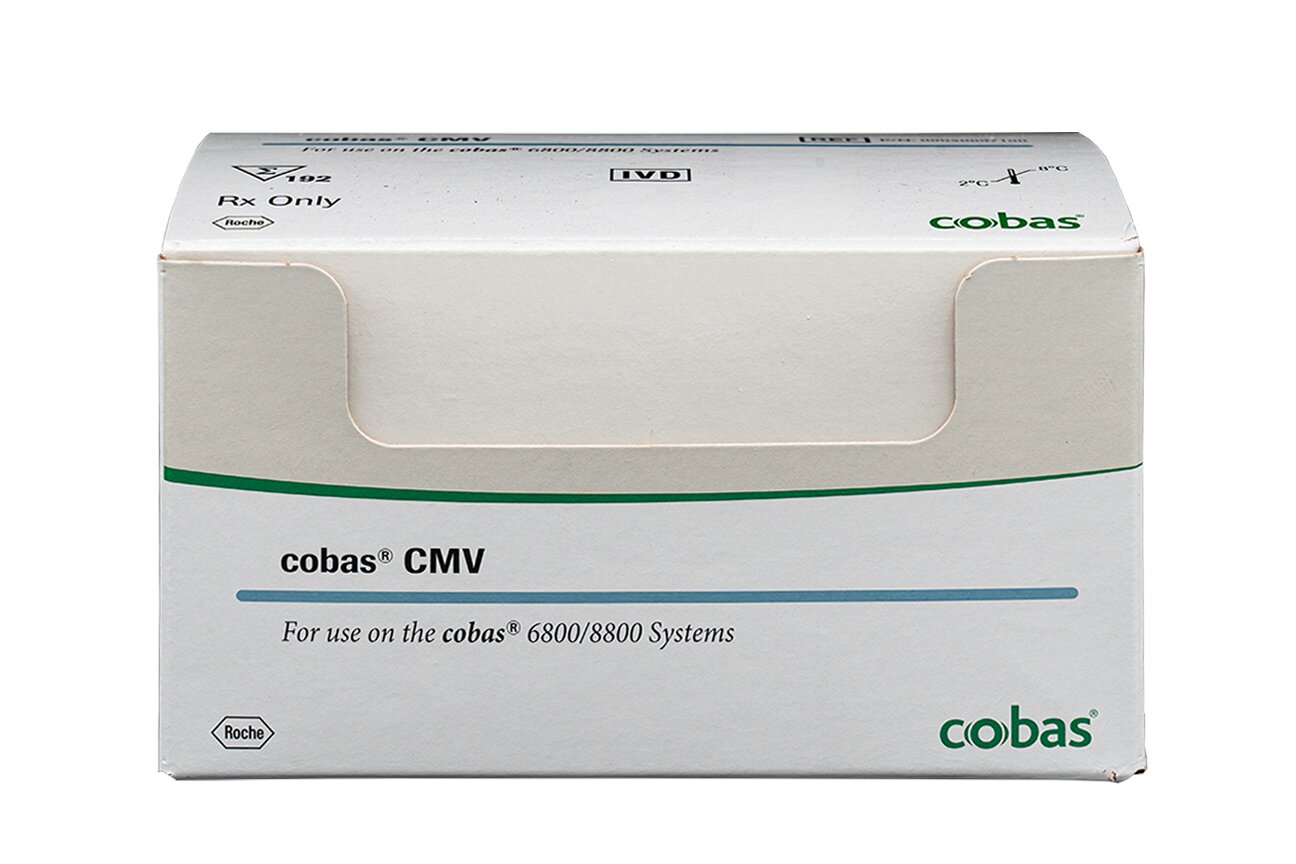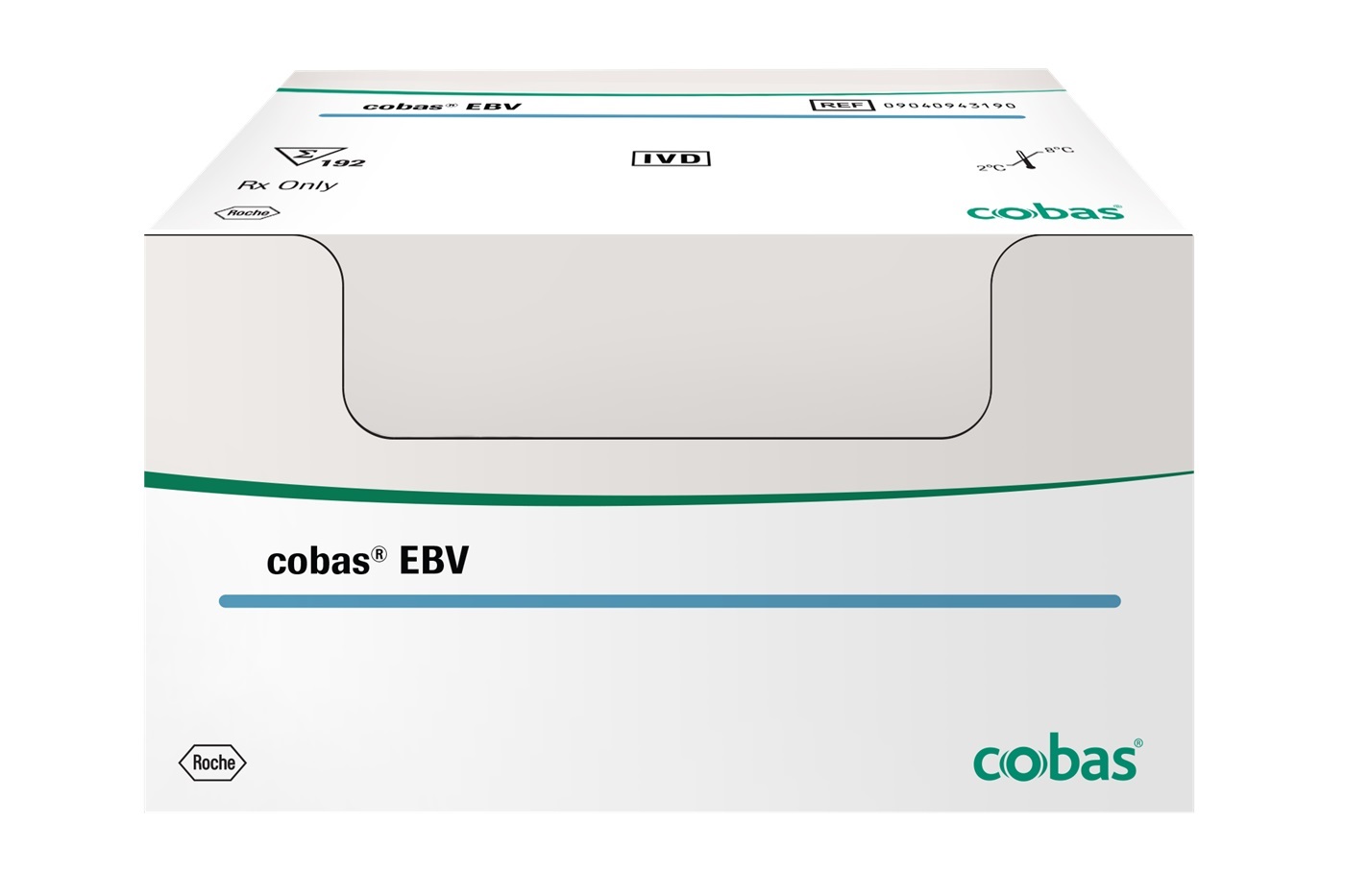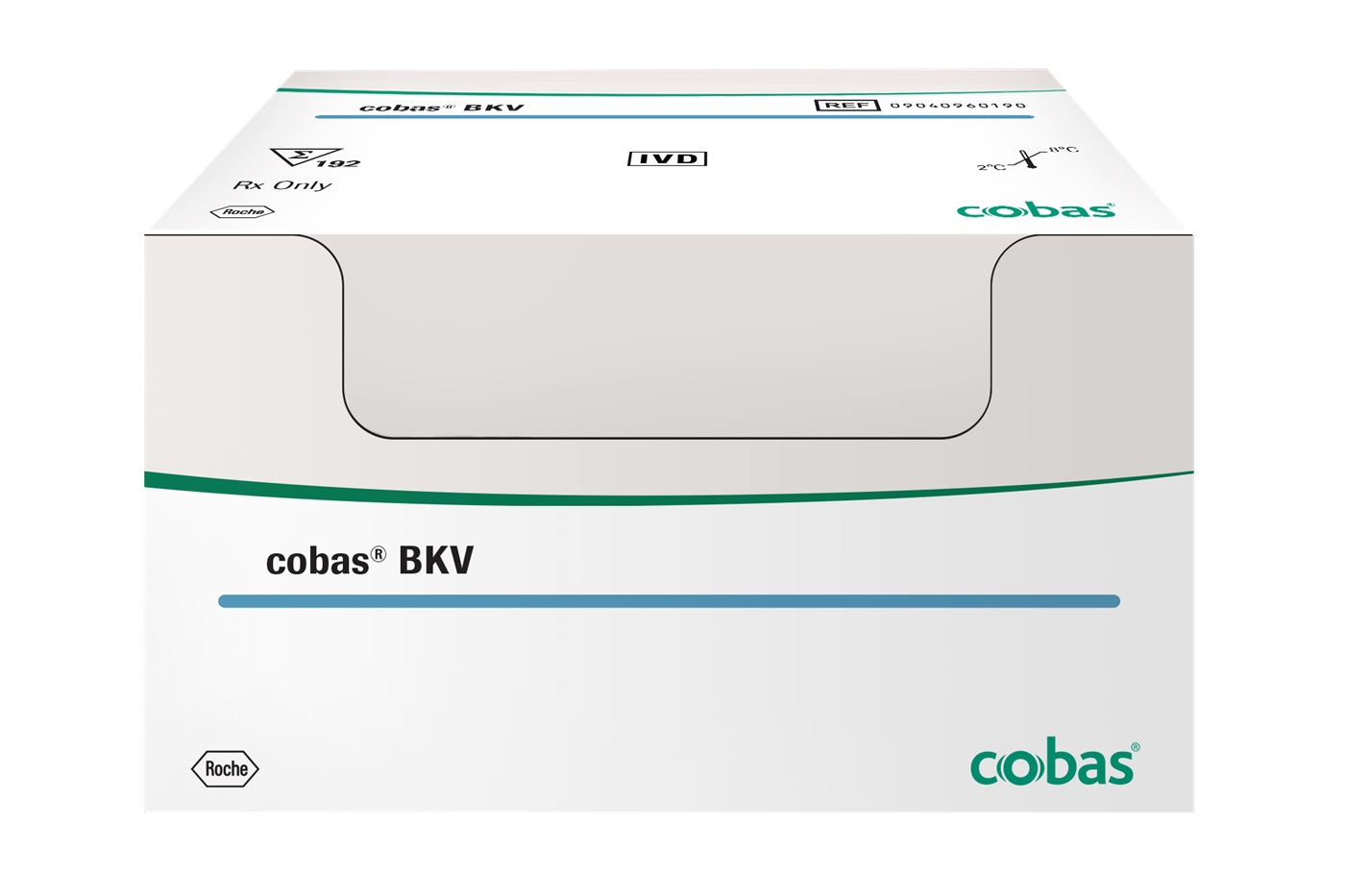For localized information and support, would you like to switch to your country-specific website for {0}?
Shining a light on transplant transmitted infections
Ensuring the gift of life is safely delivered
For certain health conditions, transplantation of solid organs, tissues, or cells from a donor to a recipient is often the only viable option for patients.1 Advancements in surgical techniques, immunosuppression, donor-recipient matching, and antimicrobial agents have all contributed to increased patient success during and after transplant procedures.2 However, complications due to infection after transplantation are one of the main causes of post-operative morbidity and mortality.3
Minimizing risk requires comprehensive and reliable pre- and post-transplant testing. From initial screening to post-transplantation follow-up, several samples are needed to run multiple tests for possible pathogens. Roche’s portfolio spans the core tests needed for pre-transplant and post-transplant virus monitoring, as well as several supporting assays. With advancements in serologic and molecular testing, increased automation, broad testing menus, and more streamlined workflows, laboratories are able process samples more efficiently and detect potential pathogens with greater precision.
Roche is committed to protecting patients and the gift of life with continuous innovation in testing to give patients the best shot at a second chance.
Common infections can have significant consequences
End-stage organ failure is estimated to affect more than six million people worldwide.4 Due to the high demand for organs and cells, every potential donor should be considered. However, this can open the possibility of transmitting infections, and to a lesser extent malignancy, from the donor organ to the recipient. Post-transplantation immunosuppressive regimes are critical in controlling organ rejection, but opportunistic infection can cause complications if not managed.
Common infections found in people of all ages, which generally do not cause problems for those with healthy, functioning immune systems, can have serious consequences for immunocompromised people and are a leading cause of morbidity and mortality in patients following transplantation. Examples include:
Cytomegalovirus (CMV)
CMV is a major cause of infections post-transplant, with incidence varying by transplant type, donor-recipient match, and immunosuppressive regimen. Some 20%-60% of solid organ transplant recipients develop a symptomatic CMV infection, typically during the first few months after transplantation.5 Patients can be infected through the donor organ, or the virus can be reactivated if previously present, or a new infection may be acquired during the transplant process.6
Epstein-Barr virus (EBV)
EBV infection in immunocompromised transplant patients can result in malignant B cell lymphoproliferations, such as post-transplant lymphoproliferative disorder (PTLD). In EBV-seronegative transplant recipients, EBV infection rates are high, approaching therefore, the incidence of PTLD is greater in children who are more likely EBV-seronegative than adults Incidence varies by organ transplanted, but can be as high as 20% of recipients.7
BK polyomavirus (BKV)
BKV is a member of the polyomavirus family. Infection in immunocompromised individuals, such as patients who receive solid-organ transplants can cause complications. For kidney transplant patients, BKV infection is considered the most common viral complication, causing polyomavirus nephropathy (PVN) in up to 10% of kidney transplant recipients, and about 50% of PVN-affected patients will experience transplant graft failure.8
Herpes simplex virus (HSV) / Varicella Zoster virus (VZV)
HSV and VZV are ubiquitous yet important human pathogens that can have very similar and wide-ranging clinical presentations.8 Transplant recipients are more susceptible to severe manifestations of HSV infection and may be slower to respond to therapy.9 HSV is the second most common cause of viral infection after transplantation, whereas VZV has been shown to cause symptomatic infections in up to 20% of solid organ transplants, and more than 40% of hematopoietic stem cell transplants.10
Human adenoviruses (HAdVs)
HAdVs cause asymptomatic-to-mild respiratory infections in children and young adults. However, in patients undergoing transplantation who are immunocompromised, HAdV can cause severe symptoms, such as hepatitis, nephritis, meningoencephalitis, and pneumonia.11 AdV infection has been found to occur in 5-22% of solid organ transplant patients, usually within the first six months post-transplantation.12 Once established, HAdV infections are difficult to cure and can result in organ failure and death.13
Toxoplasma gondii
Toxoplasma gondii is a relatively common infection and can be transmitted via organ transplant from an infected donor, or reactivation of a latent Toxoplasma infection can occur as a result of immunosuppression in organ transplant recipients. Reactivated disease in immunocompromised hosts frequently presents with brain lesions and can be associated with high morbidity and mortality.14-16
Overall, about 50% to 65% of transplant recipients will develop symptomatic viral infection within 90 days post–solid organ transplant without prophylaxis, and infections account for about 20% of the deaths within 100 days after hematopoietic stem cell transplant. The earlier these infections can be detected, the higher the likelihood that clinicians can place patients on treatment to produce better outcomes.17,18
Pre- and post-transplantation laboratory testing is critical to making the most out of every donation, and ensuring patients get the life-saving surgeries they need. Early intervention with best-in-class monitoring tools provides actionable results that enable informed treatment decisions.
Challenges to consistent and reliable diagnosis of transplant transmitted infections
Comprehensive and reliable testing requirements
The success of transplant programs depends on comprehensive and reliable pre- and post-transplant testing to minimize risk. From initial screening to post-transplantation follow-up, labs must process multiple samples and run numerous tests to detect potential pathogens.
Ensuring consistency across institutions
Labs are tasked with ensuring that diagnostic testing is consistent and comparable across institutions and throughout the continuum of care. Variability in practices can create challenges in maintaining uniform diagnostic standards.
Variability among viral load thresholds to guide treatment decisions
Treatment decisions for viral infections heavily rely on viral load. However, there is an absence of universal viral load thresholds to guide treatment decisions.19 Coupled with differences in assay availability and performance, standardization and consistency in testing remains a challenge.
Delays in test result turnaround
For some laboratories, send-out testing can result in delays of several days, slowing down critical treatment decisions and impacting patient care during time-sensitive situations.20
Limited Access to Accurate Testing
Restricted availability of accurate viral monitoring tests and results makes it challenging for clinicians to determine optimal treatment plans. This limitation increases the risk of adverse outcomes for patients due to delayed or inappropriate treatment decisions.21
Featured products
Benefits of Roche diagnostic solutions for managing transplant transmitted infections
A range of testing solutions across the continuum of care
To ensure effective and successful infection management, laboratory directors and healthcare providers must use a testing solution that delivers results that are clinically validated and aligned across institutions. Across the diagnostic continuum, Roche offers healthcare professionals a testing portfolio to monitor and improve care for transplant patients who are at risk for common infections or viral reactivations.
Our solutions enable clinicians to deliver effective patient treatment plans and make quick adjustments for personalized healthcare, including:
- A comprehensive range of serological and molecular tests that cover the most common infections including Cytomegalovirus, Epstein-Barr virus, and BK virus
- Highly specific and sensitive assays that help minimize unnecessary discarding of transplants and help to ensure safe transplantations22-26
- Traceability of viral load results that allow for convenient patient follow-up
- Fully automated systems that can run multiple tests from a single sample, delivering trusted results quickly
- Fully automated workflows that reduce the potential for human error
- Standardized processes that ensure predictable turnaround times
- Reproducible results that allow for confident decision-making22-26
Roche continues to develop new molecular and serological tests that can be used to monitor transplant patients and enable confident decision-making throughout the continuum of care.
Bringing safety, reliability, and efficiency to organ transplant testing
Appropriate testing for infectious diseases pre-transplant, which assesses all the risks associated with the transplant, is essential for success.
Serologic testing is an integral part of clinical management, helping to:
- Identify infections that may disqualify the recipient or the donor
- Match the right donor with the right recipient
- Implement strategies to mitigate the risk of infection post-transplant
Roche serology assays and instruments can be used to perform a broad range of immunoassays and offer various options to suit throughput needs. Roche Elecsys® assays include highly specific and sensitive serology tests to detect infectious diseases, including:27-30
- Testing based on ECL (ElectroChemiLuminescence) technology to deliver reliable results
- Serology screening assays that detect the major viral genotypes and variants found worldwide
- Very high seroconversion sensitivity
- Very high specificity and clear cut-off separation of positive and negative results to reduce the need for retesting
Establishing harmonization in post-transplant monitoring
The widespread application of polymerase chain reaction (PCR) testing for the detection of viral nucleic acid (DNA or RNA) is the most important innovation in laboratory diagnosis and clinical management of post-transplant infections.31
Nucleic acid amplification testing (NAT) techniques, like PCR testing, are commonly used to:
- Aid in the diagnosis and management of transplant transmitted infections
- Measure viral load to inform the need for treatment or change in immunosuppression
- Monitor a patient’s response to therapy
To optimize viral load monitoring and elevate patient care, Roche offers the first FDA-cleared and approved molecular transplant portfolio - the cobas® CMV, cobas® EBV, and cobas® BKV tests. The portfolio provides:22-24
- Critical transplant viral tests that can run from a single patient sample on the fully automated cobas® 5800, 6800, and 8800 systems
- Fast, trustworthy results in a streamlined workflow for laboratories
- Ready-to-use reagents and controls calibrated to WHO international standards that ensure result comparison across healthcare institutions no matter where the tests are run22-24
References
- World Health Organization. Transplantation [Internet; cited February 2025]. https://www.who.int/health-topics/transplantation#tab=tab_1
- Rana A, Godfrey EL. Outcomes in Solid-Organ Transplantation: Success and Stagnation. Tex Heart Inst J. 2019;46(1):75-76
- Jha V. Post-transplant infections: An ounce of prevention. Indian J Nephrol. 2010;20(4):171-178.
- Hibberd, PL, Tolkoff-Rubin NE, Cosimi AB, Schooley RT, Isaacson D, Doran M, et al. Symptomatic cytomegalovirus disease in the cytomegalovirus antibody seropositive renal transplant recipient treated with OKT3. Transplantation 1992; 53:68-72.
- Levin A, Tonelli M, Bonventre J, et al. Global kidney health 2017 and beyond: a roadmap for closing gaps in care, research, and policy. Lancet. 2017; 390(10105):1888-1917.
- Medscape Transplantation. Infections after kidney transplantation. CME Coverage, based on Renal Week 2002: American Society of Nephrology 35th Annual Meeting. [Internet; cited 2024 Dec 7]. Available from: https://www.medscape.org/viewarticle/445262
- Lindsay J, et al. EBV post-transplant lymphoproliferative disorder – update on management and outcomes. Curr Opin Infec Dis. 2021 Dec 1;34(6):635–645.
- Jamboti JS. BK virus nephropathy in renal transplant recipients. Nephrology. 2016 21: 647– 654.
- Wong AA, et al. Development of a multiplex real-time PCR for the simultaneous detection of herpes simplex and varicella zoster viruses in cerebrospinal fluid and lesion swab specimens. J Virol Methods. 2016;229:16-23.
- Wilck MB, Zuckerman RA; AST Infectious Diseases Community of Practice. Herpes simplex virus in solid organ transplantation. Am J Transplant. 2013 Mar;13 Suppl 4:121-7.
- Shiley K, Blumberg E. Herpes viruses in transplant recipients: HSV, VZV, human herpes viruses, and EBV. Infect Dis Clin North Am. 2010;24(2):373-393.
- Rodríguez E, et al. Humanized Mice Reproduce Acute and Persistent Human Adenovirus Infection. JID. 2017; 215(1):70-79.
- Lynch JP, Kajon AE. Semin Respir Crit Care Med. 2016 Aug;37(4):586–602.
- Halonen SK, Weiss LM. Toxoplasmosis. Handb Clin Neurol 2013;114:125-145.
- Jones JL, Parise ME, Fiore AE. Neglected parasitic infections in the United States: toxoplasmosis. Am J Trop Med Hyg 2014;90:794-799.
- Luft BJ, Remington JS. Toxoplasmic encephalitis in AIDS. Clin Infect Dis 1992;15:211-222.
- Fishman JA. Infection in Organ Transplantation. Am J Transplant. 2017 Apr;17(4):856-879.
- Freeman RB Jr. The 'indirect' effects of cytomegalovirus infection. Am J Transplant. 2009 Nov;9(11):2453-8.
- Misra A and Binnicker MJ. Diagnosis and Monitoring of Viral Infections in the Transplant Population. J Clin Mic News. 2021 Sept 15; 43(18):157-166.
- Razonable RR, Paya CV, Smith TF. Role of the laboratory in diagnosis and management of cytomegalovirus infection in hematopoietic stem cell and solid-organ transplant recipients. J Clin Microbiol. 2002 Mar;40(3):746-52.
- Roberts T, Cohn J, Bonner K, Hargreaves S. Scale-up of Routine Viral Load Testing in Resource-Poor Settings: Current and Future Implementation Challenges. Clin Infect Dis. 2016 Apr 15;62(8):1043-8
- F. Hoffmann-La Roche Ltd. cobas® CMV Method Sheet. (v2.0). 2024.
- F. Hoffmann-La Roche Ltd. cobas® BKV Method Sheet. (v4.0). 2024.
- F. Hoffmann-La Roche Ltd. cobas® EBV Method Sheet. (v4.0). 2024.
- F. Hoffmann-La Roche Ltd. UC-TIB-AdV Instructions for Use. (v 05). 2024.
- F. Hoffmann-La Roche Ltd. UC-TIB-HSV/VZV Instructions for Use. (v 03). 2024.
- F. Hoffmann-La Roche Ltd. Elecsys® Anti-HCV II Method Sheet. (v 2). 2024.
- F. Hoffmann-La Roche Ltd. Elecsys® HIV Duo Method Sheet. (v 1). 2023.
- F. Hoffmann-La Roche Ltd. Elecsys® Syphilis Method Sheet. (v 3). 2024.
- F. Hoffmann-La Roche Ltd. Elecsys® Anti-HBc II Method Sheet. (v 3). 2024.
- Razonable RR, Paya CV, Smith TF. Role of the laboratory in diagnosis and management of cytomegalovirus infection in hematopoietic stem cell and solid-organ transplant recipients. J Clin Microbiol. 2002 Mar;40(3):746-52.



